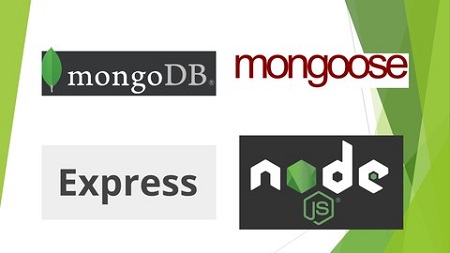
English | MP4 | AVC 1280×720 | AAC 44KHz 2ch | 3 Hours | 310 MB
Learn NodeJS Express MongoDB and Mongoose from scratch and develop applications and APIs real fast
NodeJS is by far one of the most popular web server technologies.
NodeJS is used by pretty much every big company that needs speed, agility and
concurrency at its core and NodeJS developers are always in demand.
In this course you would learn NodeJS from scratch, Express framework, MongoDB database and Mongoose and develop API s using them.
I have designed the curriculum to get you started with practical coding examples right from the beginning. So whether you want to start of your career with web-technologies or make a career switch, this course is just right for you.
You would first get a brief theory on each of the topics and then dive straight to code-along lectures.
You would first learn:
- Basics of NodeJS, how it works under the hood and what makes it so great
- Core NodeJS modules by way of practical coding examples
- Node Package Manager(NPM) and how you can import existing modules/libraries and use them to build your App or API
- Node’s Express framework and build a web-server using it. You would get introduced to the concept of developing an API
- MongoDB and learn to interact with the database using NodeJS native drivers
- Mongoose – a very popular ODM used alongside MongoDB
- Then you would build a professional looking API using all your learnings and test it.
- You learn about Git to put your NodeJS API code under version control
- Finally you deploy your API built using NodeJS to a cloud platform – Heroku
At appropriate stages you would be given exercises and projects to work on that would help you explore on your own and also refresh your learning.
It would greatly help if you have a beginner’s knowledge on coding in Javascript
The course goes over the topics step by step in sufficient detail and adopts a code/work along method so that students can run the apps or API s in parallel to the instructor.
The theory has been kept to a minimum and crisp, just enough to get you the context before you start hands on.
What Will I Learn?
- Understand NodeJS basics and its concepts of asynchronous programming
- Build Applications in Node to interact with the file system, databases and http
- Get a good grasp of core NodeJS modules, several NPM modules and build apps using it
- Understand Express framework that serves as a foundation for API Development
- Learn MongoDB database and create a database server on your computer
- Connect to MongoDB database using NodeJS and build a simple API
- Use MongooseJS to interact with MongoDB and enhance your API
- Build and test an API using Node, Express, MongoDB and Mongoose
- Put the Node API under Git version control
- Deploy the Node API to a cloud PaaS environment
Table of Contents
Introduction
1 Course Introduction
Node JS Introduction
2 NodeJS – Basics
3 NodeJS – Installation
4 NodeJS Development IDE – VS Code Setup
5 NodeJS – Blocking vs Non-blocking demo
6 Hello Node
NodeJS Core Modules
7 Core Modules – Introduction
8 Interacting with file system
9 Interacting with HTTP
10 Global Modules
NodeJS – NPMThird Party Modules
11 NPM Modules-Introduction and lodash
12 NPM Modules – Yargs
13 Your first NodeJS Project
Node – Express Framework – Start API Development
14 Express Framework-Section Introduction
15 Hello Express
16 Express – Serving Static HTML
17 Express Routing
18 Express Middleware
MongoDB and Mongoose – API with back-end database
19 MongoDB – Introduction
20 MongoDB and RoboMongo SetUp
21 MongoDB – NodeJS Native Driver
22 MongoDB – Notediary APIusing NodeJS native driver
23 Enhancing the Notediary API
24 ES6 Promises
25 ES6 Promises with MongoDB
26 Mongoose.js Introduction
27 Recreate Note API with Mongoose
Build and Deploy an API
28 Build Customer-Info API using Node Express MongoDB Mongoose
29 API Authentication – Password Hashing
30 API Authentication – JWT(JSON Web Token)
31 Add API to Git Version Control
32 Deploy API to Heroku
Resolve the captcha to access the links!